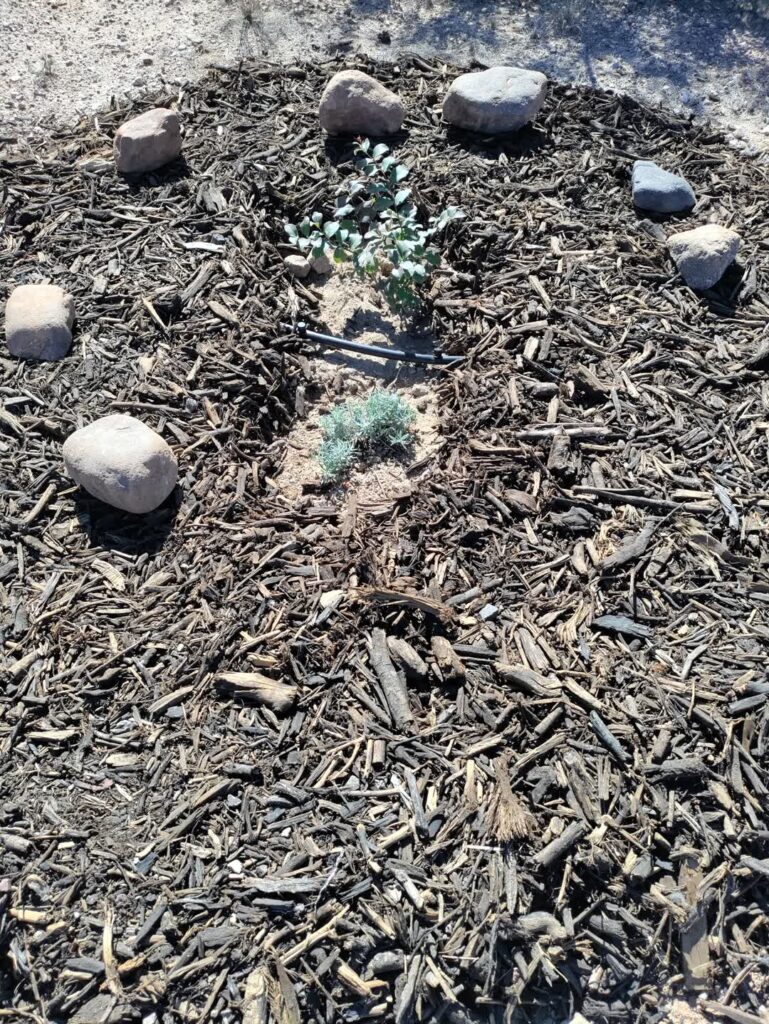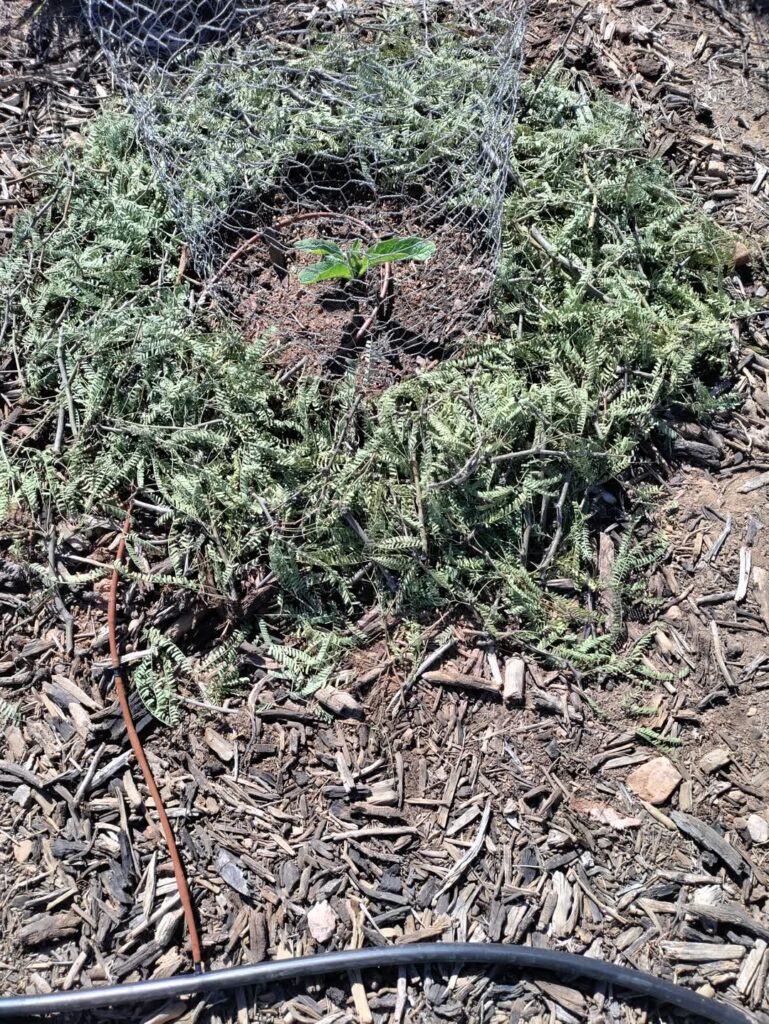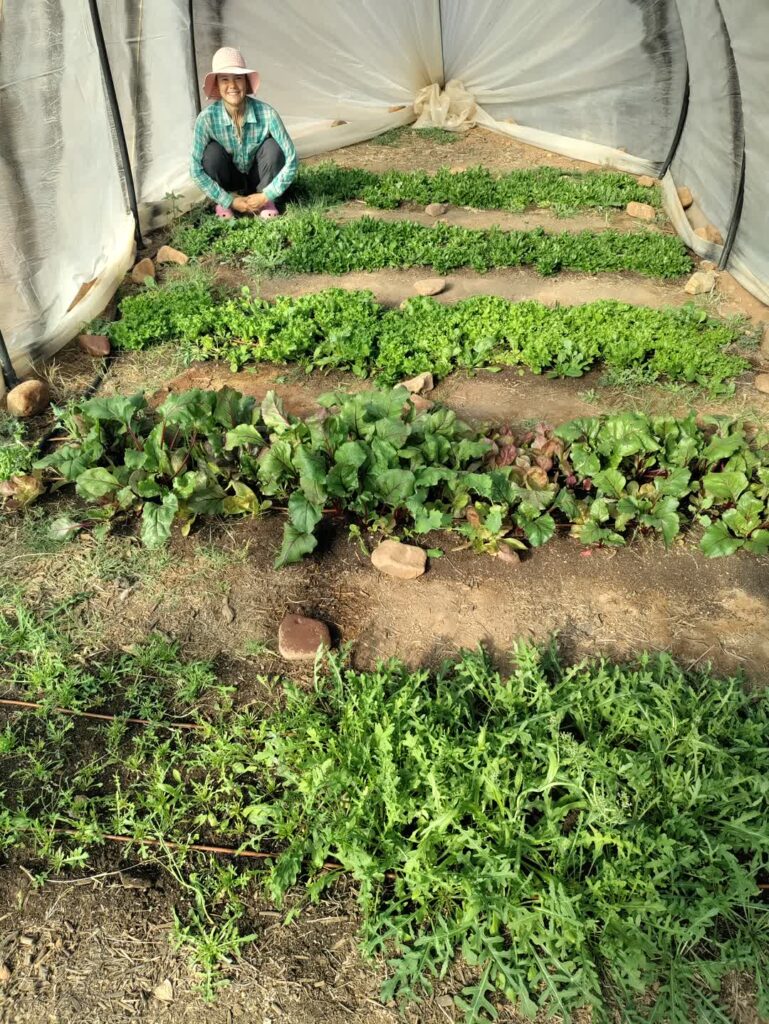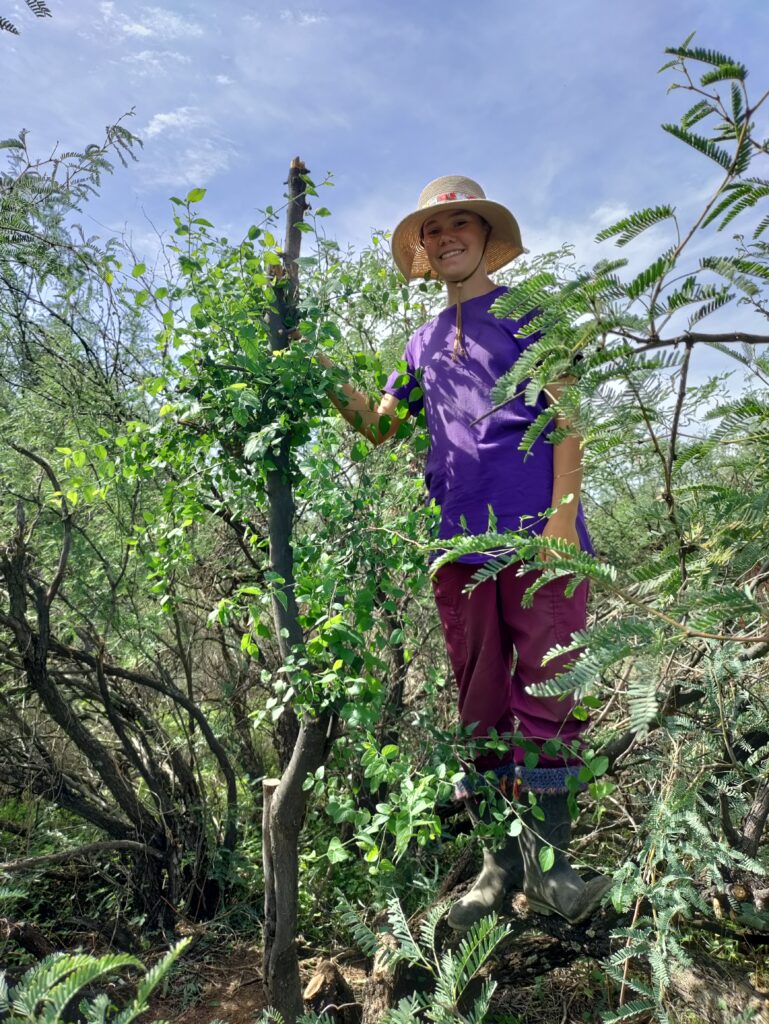Growing vegetation on the desert has many challenges. One challenge is that hard, dry ground makes it difficult for anything to take root. We’ve been working on developing good soil, but regular watering is required. Rainwater-harvesting earthworks are designed to help, but that by itself would take quite a few seasons to transform desert into good soil. So we’re using irrigation combined with earthworks to speed up the process of building a thriving system.
We started out watering everything by hand: all the trees and gardens. This is very time-consuming, especially to get water to soak down to sufficient depth. Last year we installed drip irrigation in just one of the gardens to gain some experience. Flood irrigation isn’t a realistic option and overhead sprinklers have a number of drawbacks such as being less precise, making plant leaves more disease prone, and losing enormous amounts of water to evaporation (water is a valuable resource on the desert where wells are running dry just one valley east of us).

Ever since we got through the initial learning curve we’ve been steadily expanding. When I installed our waterline from the well share, I put in two faucets and five strategically-placed stubs for future irrigation use. I had no idea how I was going to plumb them, but once we got the first one done, it was pretty easy. Each stub now has a ground-level faucet and a drip irrigation head assembly (timer, back-flow preventer, filter, and pressure regulator – see photo at top).

We now have over a thousand feet of tubing running around the courtyard to all the spots we’re growing things, as well as running to the trees in the front yard and to various places in the backyard. Of course this saves an enormous amount of time while delivering water right where it’s needed and in a way that it slowly soaks deep down into the root zone. The biggest challenge now is juggling all the timers and watering schedules of different plants!

By running the tubing above ground instead of burying it, we’re able to use it for growing all year round. We have flush valves at the end of every line that drain the line automatically whenever the water shuts off and the pressure drops. Any water remaining in the line then has plenty of room for expansion when it freezes at night in the winter. The morning sun thaws the lines pretty rapidly – allowing it to be used again.





